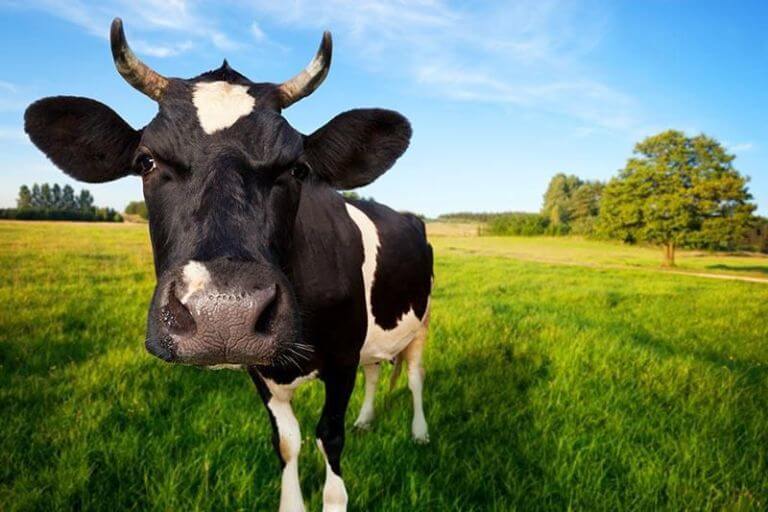The Economics of Cow Protection
By Caitanya Chandra Das | Feb 05, 2022

Many speak about the importance of cow protection. Srila Prabhupada explains how cows are important for a progressive society, helping human beings to ascend to the mode of goodness. Once in Mayapur Srila Prabhupada commented how just having a few cows and letting them roam around in the property would bring auspiciousness. Cows are very calm and docile animals, to spend time with cows, brushing or feeding them is a perfect medicine to stress and depression. The milk they provide helps one to improve his health and develop the fine brain tissues needed to understand spiritual subjects. Bulls are very strong animals who can be used to plow the earth and produce grains. Before tractors were invented, bulls literally feed human society. Even the dung produced by them is useful, being simultaneously a perfect fuel and perfect fertilizer. We read in the Vedas that humanity prospered for thousands of years in a sustainable way by this symbiosis between humans and bovines. When we consider that God himself chooses to spend His time as a cowherd boy, things become even more clear.
Taking all of this into considerations, projects of cow protection, where devotees could take care of cows and live by selling ahinsa milk and other milk products seem to be a no-brainer. However, as easy as it may seem, we don’t see many successful projects of cow protection around. Many can’t maintain themselves at all, and most of the goshalas that are somehow successful are actually maintained by donations, and not by the milk produced by the cows. Why it’s so?

The problem is that the milk industry presents a huge obstacle. In modern milk farms, cows are managed in an almost industrial way, envisioning the highest possible profits. All the bulls that take birth, as well as the old cows that can’t give more milk are sold, and therefore they need to feed and take care of only the cows that are producing. This industrial approach makes the milk they produce very cheap. In most countries one can buy a little of milk for around one dollar — sometimes milk is cheaper than bottled water!
It’s not possible for any project of cow protection to be nearly as productive as a commercial farm. Not only the animals are treated in a much more ethical way, but they need to take care of not only all the cows who are not giving milk but also of all the bulls. In general, only one-quarter of the animals in a goshala will be cows producing milk. For each cow that is currently giving milk, the goshala will typically also have to take care of an older cow and also two bulls.
In the past, before the invention of tractors, the bulls would be engaged in plowing the fields and pulling carts, and therefore they would be very useful. Nowadays, however, tractors and other vehicles are used and thus the bulls are basically unemployed. This is not only bad for the bulls, who become bored and irritated for not being able to use their strength but is also economically bad for the goshala, that end’s-up paying for tractors and other machines instead of engaging the bulls they already have. It’s however difficult to escape this situation since to use bulls it’s necessary a lot of manual labor and a lot of knowledge of animal husbandry, a skill that is rarely available nowadays.
Going back to the milk, these challenges make the production of ahinsa milk much more expensive than regular milk. In general, ahinsa milk will always cost between two and four times the price of regular milk, if not more. On top of that, there may be costs of packing and transportation to the point of sale. In the case of temples and groups in large cities, this can add quite a lot, since the distance from the farm may be quite considerable.
The main problem, according to devotees involved in projects of cow protection I have been talking to, is exactly that most are not willing to pay for the full cost of the milk. The goshalas are thus forced to sell the milk close to the regular market price, and thus are always operating at a loss. Before programs of cow protection can prosper, it’s fundamental that a base of devotees and sympathizers willing to pay the real price for ahinsa milk is formed. When such a commercial demand exists, goshalas will become a sustainable model, and they will be able to flourish.
A rough calculation is that a fair price for a litter of ahinsa milk will be around 3 to 5 dollars. A kilo of ghee will be around 50 dollars, and a kilo of panner (low-fat, made from the milk left from the ghee production) will be around 10 dollars (these prices will vary slightly according to the country and the currency, but one can expect something on this order of magnitude). We can see that these prices are quite high, but this is what ahinsa milk actually cost to be produced. The question is: are we willing to pay the price? If not, there is not much point in discussing cow protection.
Read more from Caitanya Chandra Das at Path of Bhakti.















